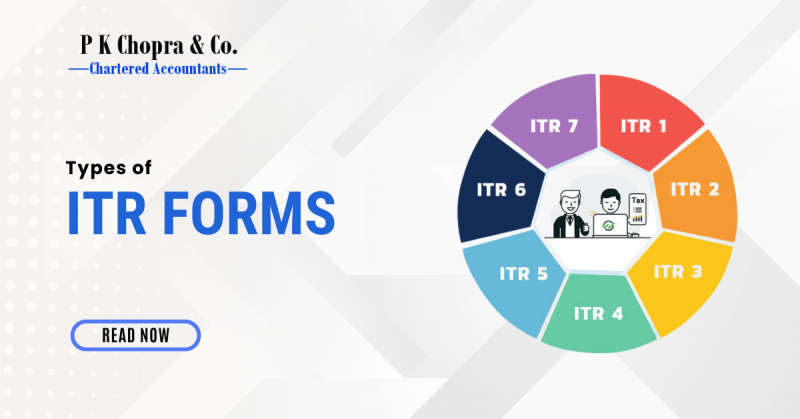Types of ITR Forms: A Comprehensive Guide
Introduction:
Filing income tax returns (ITR) is an essential task for individuals and businesses to fulfill their tax obligations. However, understanding the different types of ITR forms can be daunting. Each form caters to specific taxpayer categories and income sources. In this blog post, we will delve into the various types of ITR forms, their purposes, and the eligibility criteria associated with each form. Let’s explore the world of ITR forms and simplify the process for you.
ITR-1 (SAHAJ):
ITR-1, also known as SAHAJ, is the simplest form designed for salaried individuals or pensioners who have income from salary, one house property, and other sources. However, individuals with income exceeding ₹50 lakhs or having agricultural income exceeding ₹5,000 are not eligible to use this form.
ITR-2:
ITR-2 is applicable to individuals and Hindu Undivided Families (HUFs) who have income from sources other than business or profession. This form is suitable for those who have income from salary, multiple house properties, capital gains, or foreign assets. Individuals with business income or professional income are not eligible to use ITR-2.
ITR-3:
ITR-3 is specifically designed for individuals and HUFs who have income from a business or profession. It is applicable to individuals who are partners in a firm or have proprietary businesses. Individuals opting for presumptive taxation under Sections 44AD, 44ADA, or 44AE of the Income Tax Act should also use ITR-3.
ITR-4 (SUGAM):
ITR-4, also known as SUGAM, is applicable to individuals, HUFs, and firms (excluding LLPs) who have opted for the presumptive taxation scheme under Sections 44AD, 44ADA, or 44AE of the Income Tax Act. This form is suitable for small businesses and professionals who want to simplify their tax calculations.
ITR-5:
ITR-5 is designed for partnerships, LLPs (Limited Liability Partnerships), associations, and bodies of individuals (BOIs). It is also used by those filing returns on behalf of a trust or an estate. This form captures the income, deductions, and tax details of these entities.
ITR-6:
ITR-6 is specifically meant for companies other than those claiming exemption under Section 11 of the Income Tax Act. Companies, including those with charitable or religious trust status, should use this form to report their income, deductions, and tax liability.
ITR-7:
ITR-7 is applicable to persons, including companies, required to file returns under Sections 139(4A), 139(4B), 139(4C), or 139(4D) of the Income Tax Act. It is used by entities such as trusts, political parties, research associations, colleges, and institutions.
Understanding the correct ITR form to use is crucial to ensure accurate filing and compliance with tax regulations. Using the wrong form may result in the rejection of your return or potential penalties. Therefore, it is important to carefully assess your income sources and eligibility criteria before selecting the appropriate ITR form.
Conclusion:
Familiarizing yourself with the various types of ITR forms is essential for accurate and hassle-free tax filing. By understanding the purpose and eligibility criteria associated with each form, you can determine the right form for your specific tax situation. Ensure compliance and avoid complications by selecting the correct ITR form, providing accurate information, and fulfilling your tax obligations effectively.

